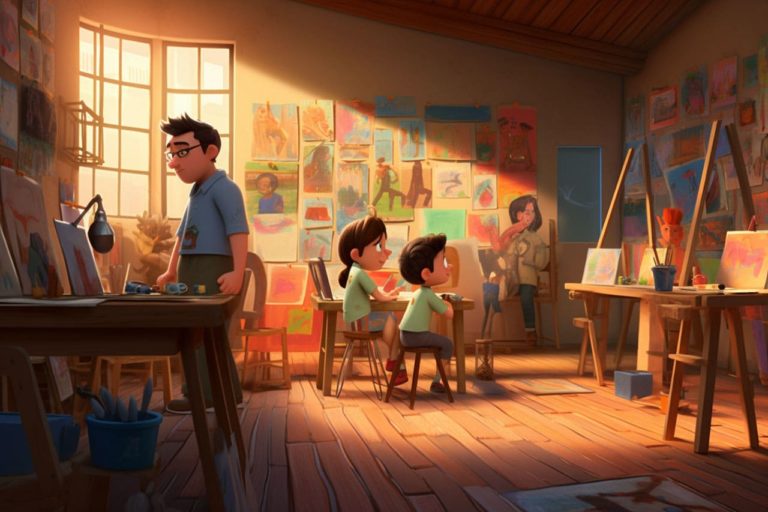Art education is an essential component of a well-rounded education, providing students with the opportunity to develop critical thinking skills, creative problem-solving abilities, and an appreciation for the arts. Unfortunately, many schools have cut funding for art education in recent years, leaving students without access to these important benefits. In this article, we’ll explore the importance of art education in schools.
The Benefits of Art Education
Art education provides students with a range of benefits, both practical and emotional. Here are just a few of the ways in which art education can benefit students:
- Develops critical thinking skills: Through art education, students learn to analyze and interpret works of art, developing critical thinking skills that are essential for success in a wide range of academic and professional fields.
- Encourages creative problem-solving: Art education encourages students to think creatively and to develop innovative solutions to problems, skills that are highly valued in many different areas of life.
- Fosters self-expression and emotional development: Through the creation and interpretation of art, students are able to express their emotions and explore their inner world, leading to greater emotional intelligence and self-awareness.
- Promotes cultural understanding: Art education exposes students to a wide range of cultures and perspectives, promoting greater understanding and empathy for others.
The Impact of Art Education on Academic Performance
Art education has been shown to have a positive impact on academic performance, particularly in the areas of math and reading. Studies have found that students who receive art education tend to score higher on standardized tests and have higher GPAs than students who do not have access to art education.
One reason for this is that art education helps to develop critical thinking skills, which are essential for success in many academic subjects. Additionally, the creative problem-solving skills that are developed through art education can help students to approach academic challenges in a more innovative and effective way.
The Role of Art Education in Career Development
Art education is not only beneficial for academic success, but it can also play an important role in career development. Many careers, including graphic design, architecture, and fashion design, require a strong background in art and design. By providing students with a solid foundation in art education, schools can help to prepare students for a wide range of career opportunities.
The Importance of Access to Art Education
Unfortunately, many schools have cut funding for art education in recent years, leaving students without access to these important benefits. This is particularly true in schools serving low-income and minority populations, which are often the first to lose funding for art education.
Access to art education should be a fundamental right for all students, regardless of their background or socioeconomic status. Schools must work to ensure that all students have access to high-quality art education programs, and that these programs are well-funded and staffed by qualified teachers.
Conclusion
Art education is an essential component of a well-rounded education, providing students with the opportunity to develop critical thinking skills, creative problem-solving abilities, and an appreciation for the arts. By cutting funding for art education, schools are depriving students of these important benefits, and limiting their academic and professional opportunities. It is time for schools to prioritize art education, and to ensure that all students have access to high-quality art education programs.
Frequently Asked Questions
Q: What is art education?
A: Art education is the study and practice of visual art, including drawing, painting, sculpture, and digital art. It is an essential component of a well-rounded education, providing students with the opportunity to develop critical thinking skills, creative problem-solving abilities, and an appreciation for the arts.
Q: Why is art education important in schools?
A: Art education is important in schools for a number of reasons. It helps to develop critical thinking skills, encourages creative problem-solving, fosters self-expression and emotional development, and promotes cultural understanding. Additionally, art education has been shown to have a positive impact on academic performance and can play an important role in career development.
Q: What are the benefits of art education?
A: Art education provides students with a range of benefits, including the development of critical thinking skills, creative problem-solving abilities, and emotional intelligence. It also promotes cultural understanding and can have a positive impact on academic performance and career development.
Q: Why have some schools cut funding for art education?
A: Unfortunately, many schools have cut funding for art education in recent years due to budget constraints and a focus on academic subjects like math and reading. However, this has left many students without access to the important benefits that art education provides.
Q: What can schools do to ensure access to art education?
A: Schools can work to ensure access to art education by prioritizing funding for art education programs and staffing these programs with qualified teachers. Additionally, schools can work to create partnerships with local art organizations and museums to provide students with additional opportunities to explore the arts.
Q: Who benefits from art education?
A: Art education benefits all students, regardless of their background or socioeconomic status. It provides students with important skills and perspectives that are valuable for success in a wide range of academic and professional fields. Additionally, art education helps to foster a love and appreciation for the arts, enriching the lives of students and their communities.
